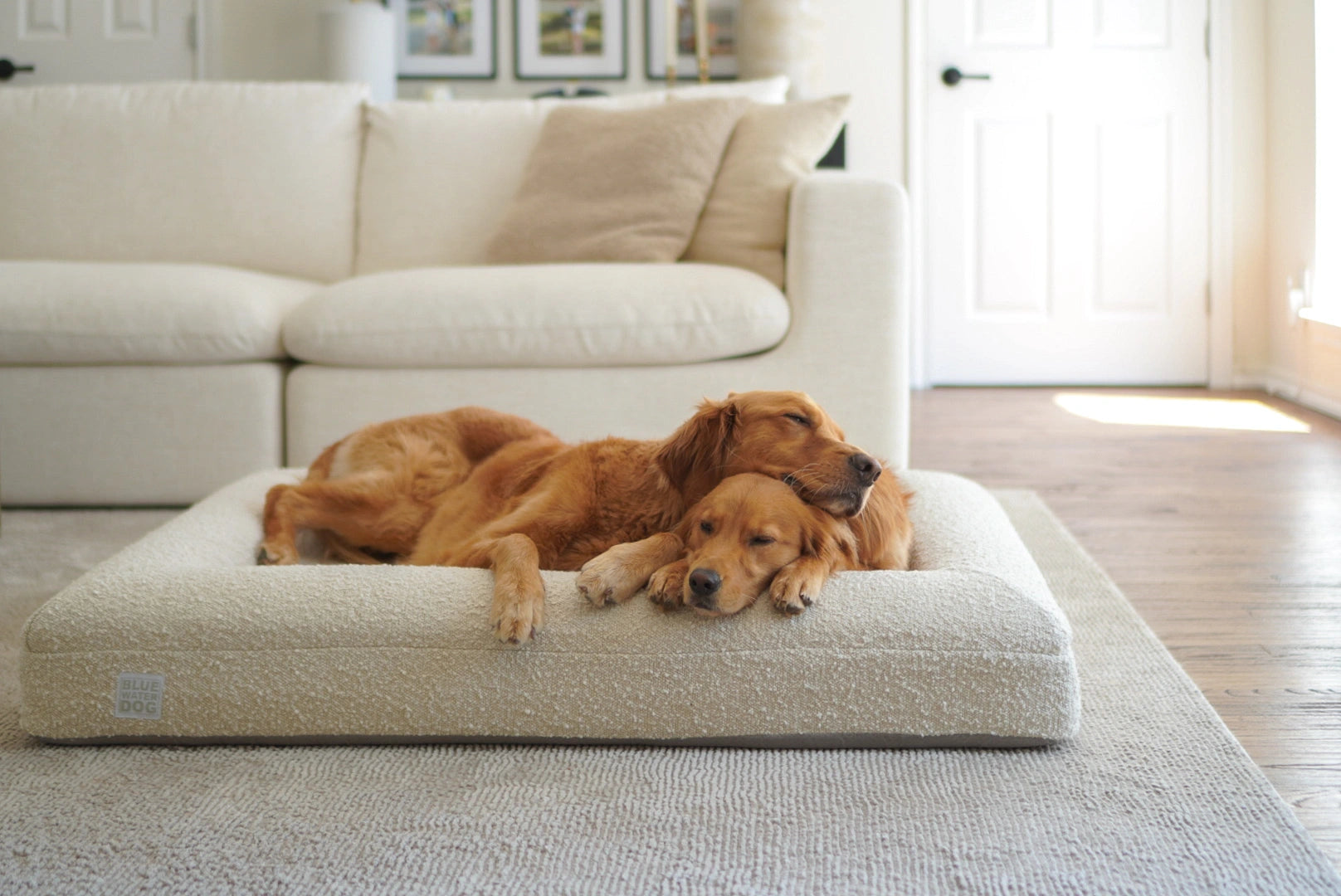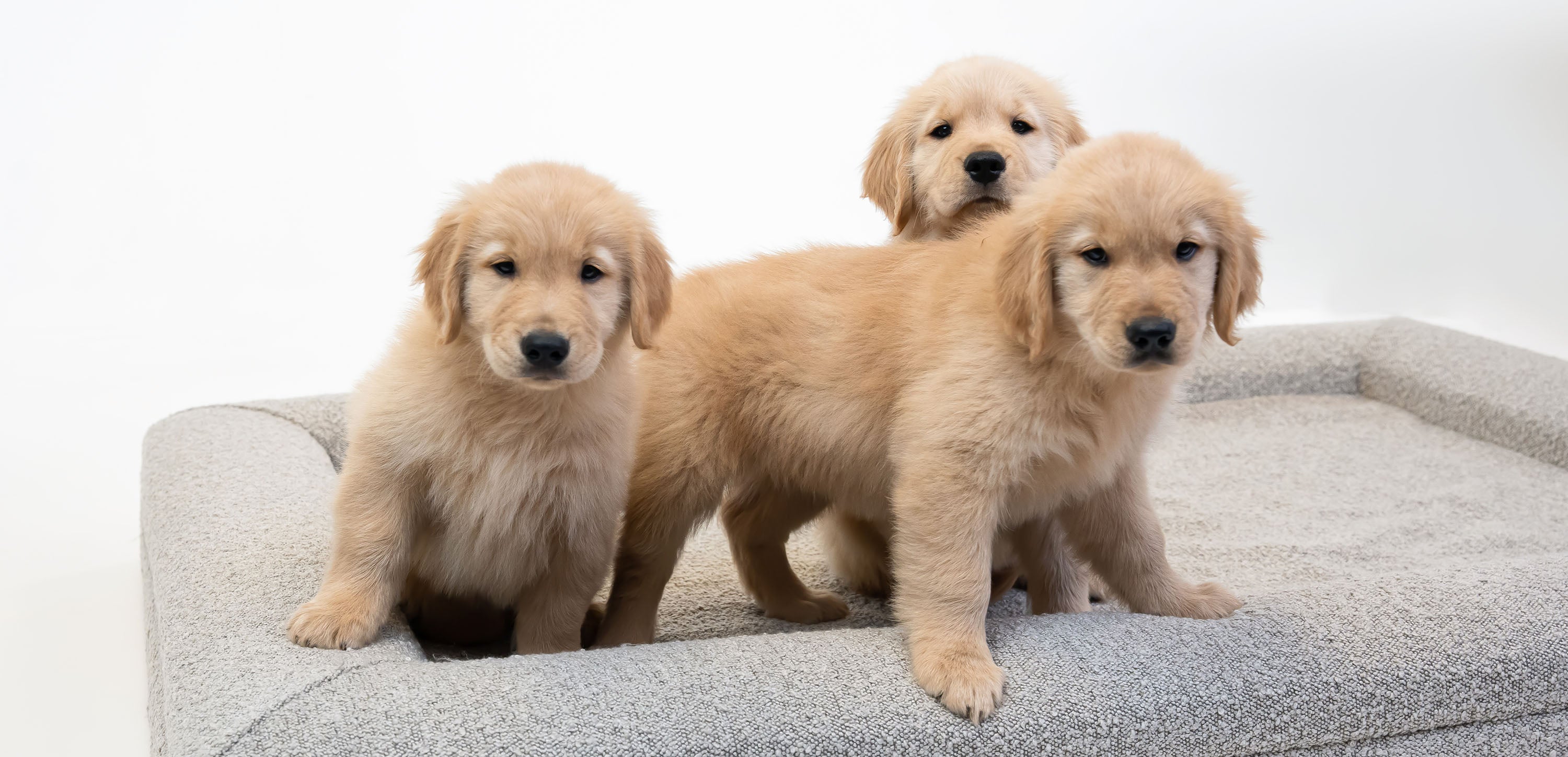Article: The Value of Teaching Your Dog the “Place” Command

The Value of Teaching Your Dog the “Place” Command
Written by Lauren Brockway, a professional dog trainer at Wilmington Dog Wizard for over 10 years.
One of the most valuable commands you can teach your dog as part of creating a healthy and strong bond with them is the "Place" command. The "Place" command instructs your dog to go to a specific location and remain there until released–this could be a dog bed, a mat, or even a designated blanket. The goal is for this command to be a signal that your dog should settle down and stay quietly in that spot.
“Place” is not just about teaching your dog where to sit though; it's about giving them a safe, calm space where they can relax and stay out of trouble. This command is especially useful during busy times at home, like when you're cooking dinner or entertaining guests. In this article, we'll delve into the numerous benefits of this command and why it's an invaluable addition to your dog's training repertoire, as well as provide a step-by-step guide on how to effectively teach your dog the "Place" command.
Why is the "place" command important in dog training?
"Place" is not only about physical location; it's about teaching your dog self-control. When your dog learns to stay in one spot, they are learning to manage their impulses and emotions. This command encourages them to relax and remain calm, even in distracting or exciting situations.
Situations where "place" can be invaluable
Having your dog understand “Place” can be particularly useful during a variety of situations–helping your dog stay composed and reducing the risk of aggressive or overly anxious behavior. Some of the most common situations where the “Place” command can come in handy include:
- During meals and cooking: Dogs can be overly curious and sometimes a little too helpful in the kitchen or during family meals. Teaching them to stay in their place can prevent begging, accidental spills, or potential accidents involving hot surfaces.
- While receiving visitors: Not every guest may be comfortable with dogs, and some dogs might be overly enthusiastic about greeting new faces. The "Place" command helps manage these interactions, ensuring a polite and safe greeting routine.
- During family gatherings: Large groups can overwhelm dogs. Having a go-to spot where they can observe but remain out of the fray can reduce their stress and minimize disruptive behaviors.
- Managing multi-pet households: In homes with multiple pets, the "Place" command can help manage dynamics between animals by assigning each their spot, reducing the chance of conflicts.
- During remote work or study sessions: With more people working or studying from home, having a dog that stays quietly in place can improve concentration and reduce interruptions during important calls or tasks.
- Safety during travel: The "Place" command can also translate to situations outside the home, such as visiting a new location or staying in a hotel. It helps your dog understand they have a safe spot, even in unfamiliar environments.
Training your dog to stay in one place cultivates their ability to focus on you and the task at hand. This can be especially valuable during training sessions or when you're teaching them new commands. The "Place" command teaches your dog that staying put and paying attention to you is rewarding, improving their overall responsiveness and making future training endeavors more effective. Imagine being able to keep your dog in a specific spot when you need them out of the way, like during meal preparation or when someone enters your home.
Helping your dog manage stress and anxiety
The "Place" command offers a safety net, ensuring your dog doesn't get under your feet, potentially causing accidents or getting into dangerous situations. This level of control is not only convenient for you but also crucial for your dog's well-being.
Dogs, like humans, have moments of anxiety and stress. Teaching your dog "Place" can serve as a safe haven for them. When they're feeling overwhelmed, they can retreat to their designated spot, knowing it's a secure and comforting space. This can be especially beneficial if your dog experiences separation anxiety, as their "Place"becomes a familiar and calming environment when you're not around.
Training your dog requires consistent communication and guidance. When you teach them the "Place" command, you establish yourself as a leader who provides clear instructions. This builds trust between you and your dog, as they understand that following your cues leads to positive outcomes. This strengthened bond is the foundation for a healthy and respectful relationship. "Place" is a command that can be applied in various settings.

How to train your dog to learn the "place" command
Before you start training your dog the “Place” command, make sure they already understand how to lie down. You’ll also need a release word like “free” or “release” that tells your dog they are free to leave their designated place; your dog should stay in their place until you give the release word.
The below is a general step-by-step breakdown to help you during your dog’s “Place” training. You can always train this behavior with shaping, luring, or clicker training as well if that is already part of your training repertoire.
- Choose the right spot: Start by selecting a place spot for your dog. It should be a comfortable area that isn’t used for any other purpose. Avoid high-traffic areas to reduce distractions and make it easier for your dog to relax. A portable mat or a special dog bed works well because you can move it around if necessary.
- Introduce the spot: Let your dog explore the chosen spot. Encourage them with treats and positive reinforcement when they show interest in the area. This initial positive association is crucial for making them feel comfortable and secure in their new "place."
- Add the cue: Once your dog is familiar with the spot, it's time to introduce the command. With a treat in hand, lead your dog to the spot, and as they step onto it, say "Place." Ensure your tone is clear and consistent. Reward them immediately with a treat and praise when they obey.
- Practice staying: After your dog starts going to their place reliably on command, begin to extend the time they spend there. Start with a few seconds, then gradually increase the duration. Use commands like "stay" or "wait" to help them understand that they should remain there. Reward them intermittently to reinforce the behavior.
- Add distractions: To ensure your dog really understands the command, start practicing with various distractions. Begin with minor distractions and slowly work up to more challenging scenarios, like having someone ring the doorbell or roll a ball past them. Reward them for staying in place despite these temptations.
- Practice in different locations: Once your dog has mastered the "Place" command in a familiar setting, start practicing in different areas of your house, and eventually in various environments like a friend’s house or a quiet park. This helps your dog understand that "Place" applies everywhere, not just at home.
Additional training tips
Patience and consistency is key when it comes to training your dog, since some dogs naturally might take longer to understand or feel comfortable with the command. Keep training sessions relatively short and sweet to prevent your dog from getting bored or frustrated, and always remember to use positive reinforcement. At the end of the day, your dog should actually love going to their designated place; if they look at it as a punishment, you’ll have a much harder time getting them to stay there.
Key takeaways
From parks to cafes to friends' homes, your dog can learn that "Place" means the same thing no matter where they are. This ability to generalize commands is an essential skill that showcases your dog's adaptability and understanding. As you embark on this journey of teaching your dog "Place," remember that patience, consistency, and positive reinforcement are key. The time and effort you invest will undoubtedly lead to a happier, more well-adjusted, and better-behaved canine companion.
A great spot that dogs love to "Place" for longer periods of time is their dog bed. For large dog breeds, it is recommended that you have an orthopedic bed if dogs will be "Placing" for longer than 5-10 minutes so that their bodies and weight will be properly supported. Personally speaking, Bluewater Dog’s orthopedic bouclé dog beds are the favorite “Placing” spots for our pups! They offer amazing support and offer four sizes of dog beds: small, medium, large, and extra large with machine-washable covers.
